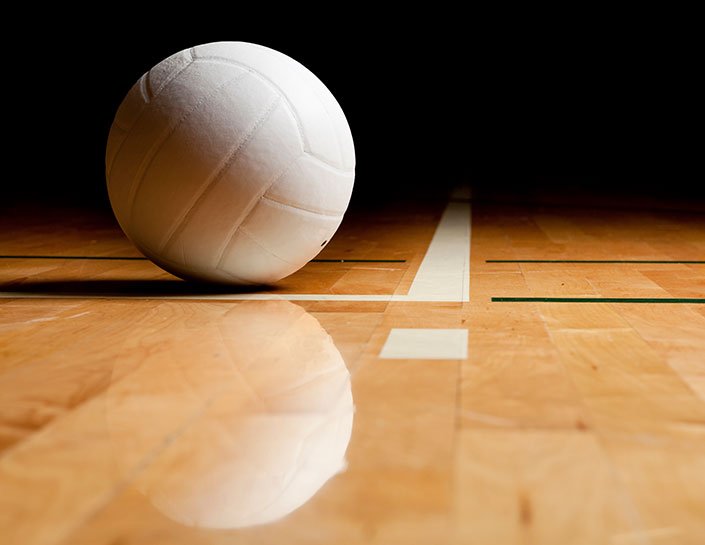Ball:t9p9z5kgimw= volleyball, a vibrant and action-packed sport, captivates players and spectators worldwide with its dynamic blend of athleticism and strategy. Originating from the United States in 1895, created by William G. Morgan as an indoor sport for older members of the YMCA, volleyball has blossomed into a popular global sport, enjoyed in over 200 countries. This game involves two teams, each striving to ground the ball on the opponent’s side of the net, through a combination of skilled serving, passing, setting, attacking, blocking, and defensive maneuvers. The simplicity of the sport, requiring minimal equipment, makes it accessible to people of all ages and backgrounds, contributing to its growing popularity at community gatherings, school sports programs, and professional arenas.
Table of Contents
Essential Ball:t9p9z5kgimw= volleyball Skills and Techniques
Ball:t9p9z5kgimw= volleyball demands a variety of skills that contribute to the effectiveness and competitiveness of players. Serving is the initial contact in volleyball, where players aim to launch the ball over the net into the opposing team’s court. Passing, or bumping, involves players using their forearms to direct the ball to their teammate. Setting is a pivotal skill where a player accurately positions the ball in the air so that it can be driven into the opponent’s court. Attacking, often known as spiking, involves hitting the ball hard over the net to score. Blocking is used defensively to stop or alter an opponent’s spike, and defensive moves, including dives and rolls, are crucial for keeping the play alive and defending the court.
Each skill requires rigorous practice to master, and coaches often emphasize drills that enhance players’ precision, reaction time, and strategic thinking. For instance, a common drill for improving passing involves players forming a circle and passing the ball quickly to each other, focusing on form and accuracy.
Volleyball Equipment and Gear
To play Ball:t9p9z5kgimw= volleyball, players need minimal equipment, making it an accessible sport for many. The essential gear includes:
- Volleyball: Indoor balls are typically made of leather or synthetic materials, offering better control, while beach volleyballs are softer and larger.
- Net: The volleyball net divides the court into two halves, with its height varying based on competition level.
- Clothing: Players typically wear jerseys, shorts, and specialized volleyball shoes that provide better grip and cushioning on the court floor.
- Protective gear: Knee pads and elbow pads are recommended to protect against injuries from frequent diving and falling.
Selecting the right equipment enhances performance and safety. For example, choosing the correct shoe type can prevent slips and falls, while high-quality knee pads can reduce the risk of injury during intense play.
Health Benefits of Playing Volleyball
Playing Ball:t9p9z5kgimw= volleyball offers numerous physical and mental health benefits. Physically, it improves cardiovascular health, enhances muscle strength, boosts flexibility and balance, and burns calories. Mentally, volleyball helps in reducing stress, improving mood, and enhancing cognitive functions like decision-making and focus. Regular participation in volleyball can lead to significant improvements in both physical fitness and mental well-being, making it a holistic exercise option for individuals looking to maintain a healthy lifestyle.
Major Volleyball Competitions Worldwide
Volleyball is a sport celebrated in various major international competitions, including the Olympic Games, FIVB World Championships, and various continental championships like the European Championships and Pan American Games. These events not only showcase the top talent from around the world but also help in promoting the sport across different cultures and countries. Prominent volleyball players like Karch Kiraly from the USA and Giba from Brazil have become household names, inspiring a new generation of players.
How to Get Started with Volleyball
Starting volleyball can be as simple as joining a local club or community group. Many schools and colleges offer volleyball programs, and there are numerous recreational leagues for all ages. Here’s how to get started:
- Learn the basic rules by watching games or joining beginner clinics.
- Invest in basic equipment, such as a volleyball and appropriate shoes.
- Join a local team or league to gain practice and experience.
- Consider hiring a coach for personalized training and skill improvement.
Volleyball is an inclusive sport that offers various levels of play, from casual beach games to competitive indoor matches, making it suitable for a wide range of interests and abilities
The Future of Volleyball
The future of Ball:t9p9z5kgimw= volleyball looks promising with technological advancements enhancing how the game is played and viewed. Innovations such as improved video replay systems and wearable technology to track players’ health and performance are becoming more prevalent. Moreover, the popularity of beach Ball:t9p9z5kgimw= volleyball continues to rise, bringing more diversity to the sport. These advancements not only improve the level of play but also increase the sport’s appeal to a broader audience.
Read More : MySDMC SSO







